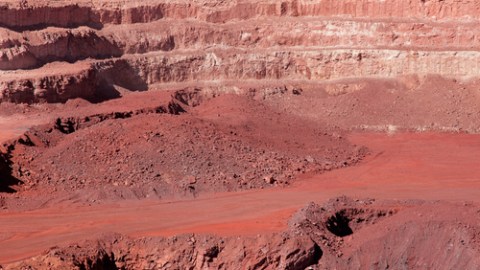Humans Aren’t Worst Polluters in History, Not Even Close

This post originally appeared in RealClearScience’s Newton blog. Read the original here.
If you think humans are polluting the planet to a degree never before seen in history, well, “You’re suffering from a species-level delusion of grandeur,” insists science writer Annalee Newitz in her new book, Scatter, Adapt, and Remember. “We’re not even the first creatures to pollute the Earth so much that other creatures go extinct.” That foul distinction belongs to ancient cousins of ours: cyanobacteria.
About 2.5 billion years ago, the Earth was much different than it is today. Rotating at faster speeds, there were about 450 20-hour days in a year. Far from cool and invigorating, the planet’s atmosphere was superheated, and comprised mostly of methane and carbon, not oxygen and nitrogen, the primary constituents of today’s atmosphere. The surface was no more hospitable to modern life. Magma seeped and bubbled amidst immense, acidic oceans. 2.5 billion years ago, Earth was a hot mess.
But in this environment — one we would deem noxious — life persisted. Oxygen-despising anaerobic bacteria floated in the ocean deep, kept cozy by hot magma streams. They subsisted on simple amino acids and sugars. Earth was turbulent, but alive.
Then cyanobacteria ruined everything. As the first organisms to use photosynthesis, they drank in the oceans’ water and absorbed photons from sunlight, using the energy from those photons to separate water’s two hydrogen molecules from its lone oxygen molecule. Afterwards, the microbes consumed the hydrogen and spit out the oxygen as a waste product.
This recipe was so successful that after millions of years cyanobacteria, also known as blue-green algae, nearly blanketed the planet’s surface, continuously belching boatloads of oxygen in the process. All of the smokestacks from all of today’s factories and power plants couldn’t come close to their polluting prowess.
Eventually, Earth’s natural oxygen absorbers — like iron — became saturated with the gaseous element, and an “oxygen apocalypse” ensued. We recognize oxygen as a bringer of life, but it’s also a powerful degrader of organic compounds and quite toxic to anaerobes. With oxygen now suffusing throughout the atmosphere, pretty much all life except the cyanobacteria gradually became extinct. Excess oxygen also reacted with the atmosphere’s methane, turning it into a weaker greenhouse gas: carbon dioxide. With a diminished ability to retain heat, the planet entered an ice age that lasted upwards of 300 million years!
One thing that this fascinating, true story demonstrates is that one bacteria’s trash is another life form’s treasure. Over many millions of years, organisms evolved that could use the built-up oxygen, mixing it with sugars to create energy. Pollution problem solved.
Of course, there’s also a more humorous and ironic takeaway. Today, we oxygen-breathers are steadily working towards the goal of turning our Earth back into the hot mess that it once was. In 2012, humans emitted 31.6 billion tons of carbon dioxide. We’re also putting more methane into the atmosphere, although at a much slower rate.
Will we ever atone for the dirty sins of our blue-green cousins and give the Earth totally back to the anaerobes? Probably not. It will take a far more concerted pollution effort than the comparatively paltry one we are currently mustering.
PrimarySource:Scatter, Adapt, and Remember: How Humans Will Survive a Mass Extinction, Annalee Newitz
(Image: Iron Ore Pit via Shutterstock)





